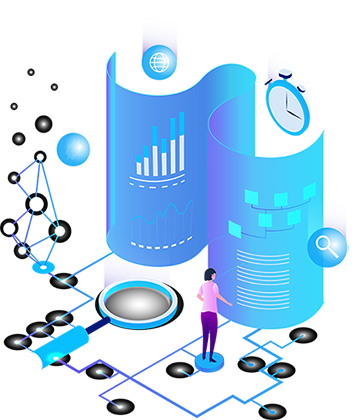The IT service management process maturity assessment
The IT service management process maturity assessment

The process maturity framework can be used as a framework to assess the maturity of each of the IT service management processes individually or to measure the maturity of all IT service management processes as a whole.
The maturity of service management processes is highly dependent on the growth stage of the IT organization as a whole. Improving the maturity of service management processes beyond the maturity and capability of the overall IT organization is difficult, if not impossible.
Reviewing of IT processes will require an assessment to be completed against the five areas of:
■ Vision and steering | ■ Process | ■ People | ■ Technology | ■ Culture
Level 1 : Initial
The process has been recognized but there is little or no process management activity and it is allocated no importance, resources or focus within the organization. This level can also be described as ‘ad hoc’ or occasionally even ‘chaotic’.
List of Services
-
Vision and steeringList Item 1
- Minimal funds and resources with little activity
- Results temporary, not retained
- Occurring at irregular intervals reports and reviews
-
ProcessList Item 2
- Loosely defined processes and procedures, used reactively when problems occur
- Totally reactive processes
- Irregular, unplanned activities
-
PeopleList Item 3
- Loosely defined roles or responsibilities
-
TechnologyList Item 4
- Manual processes or a few specific, discrete tools
-
Culture
- Tool and technology-based and driven with a strong activity focus
Level 2 : Repeatable
The IT Process is accepted and of low importance within the operation, Generally, the activities related to the process are uncoordinated, & irregular.
List of Services
-
Vision and steeringList Item 1
- No clear objectives or formal targets
- Funds and resources available
- Irregular, unplanned activities, reporting and reviews
-
ProcessList Item 2
- Defined processes and procedures
- Largely reactive process
- Irregular, unplanned activities
-
PeopleList Item 3
- Self-contained roles and responsibilities
-
TechnologyList Item 4
- Many discrete tools, but a lack of control
- Data stored in separate locations
-
Culture
- Product- and service-based and driven
Level 3 : Defined
The process has been recognized and is documented but there is no formal agreement, acceptance or recognition of its role within the IT operation as a whole
List of Services
-
Vision and steeringList Item 1
- Documented and agreed formal objectives and targets
- Formally published, monitored and reviewed plans
- Well-funded and appropriately resourced
- Regular, planned reporting and reviews
-
ProcessList Item 2
- Clearly defined and well-publicized processes and procedures
- Regular, planned activities
- Good documentation
- Occasionally proactive process
-
PeopleList Item 3
- Clearly defined and agreed roles and responsibilities
- Formal objectives and targets
- Formalized process training plans
-
TechnologyList Item 4
- Continuous data collection with alarm and threshold monitoring
- Consolidated data retained and used for formal planning, forecasting and trending
-
Culture
- Service- and customer-oriented with a formalized approach
Level 4 : Managed
The process has now been fully recognized and accepted throughout IT. It is service-focused and has objectives and targets that are based on business objectives and goals. The process is fully defined, managed and has become proactive, with documented, established interfaces and dependencies with other IT process
List of Services
-
Vision and steeringList Item 1
- Clear direction with business goals, objectives and formal targets, measured progress
- Effective management reports actively used
- Integrated process plans linked to business and IT plans
- Regular improvements, planned and reviewed
-
ProcessList Item 2
- Well-defined processes, procedures and standards, included in all IT staff job descriptions
- Clearly defined process interfaces and dependencies
- Integrated service management and systems development processes
- Mainly proactive process
-
PeopleList Item 3
- Inter- and intra-process team working
- Responsibilities clearly defined in all IT job descriptions
-
TechnologyList Item 4
- Continuous monitoring measurement, reporting and threshold alerting to a centralized set of integrated toolsets, databases and processes
-
Culture
- Business-focused with an understanding of the wider issues
Level 5 : Optimizing
The process has now been fully recognized and has strategic objectives and goals aligned with overall strategic business and IT goals. These have now become ‘institutionalized’ as part of the everyday activity for everyone involved with the process. A self-contained continual process of improvement
is established as part of the process, which is now developing a pre-emptive capability.
List of Services
-
Vision and steeringList Item 1
- Integrated strategic plans inextricably linked with overall business plans, goals and objectives
- Continuous monitoring, measurement, reporting alerting and reviews linked to a continual process of improvement
- Regular reviews and/or audits for effectiveness, efficiency and compliance
-
ProcessList Item 2
- Well-defined processes and procedures part of corporate culture
- Proactive and pre-emptive process
-
PeopleList Item 3
- Business aligned objectives and formal targets actively monitored as part of the everyday activity
- Roles and responsibilities part of an overall corporate culture
-
TechnologyList Item 4
- Well-documented overall tool architecture with complete integration in all areas of people, processes and technology
-
Culture
- A continual improvement attitude, together with a strategic business focus. An understanding of the value of IT to the business and its role within the business value chain




